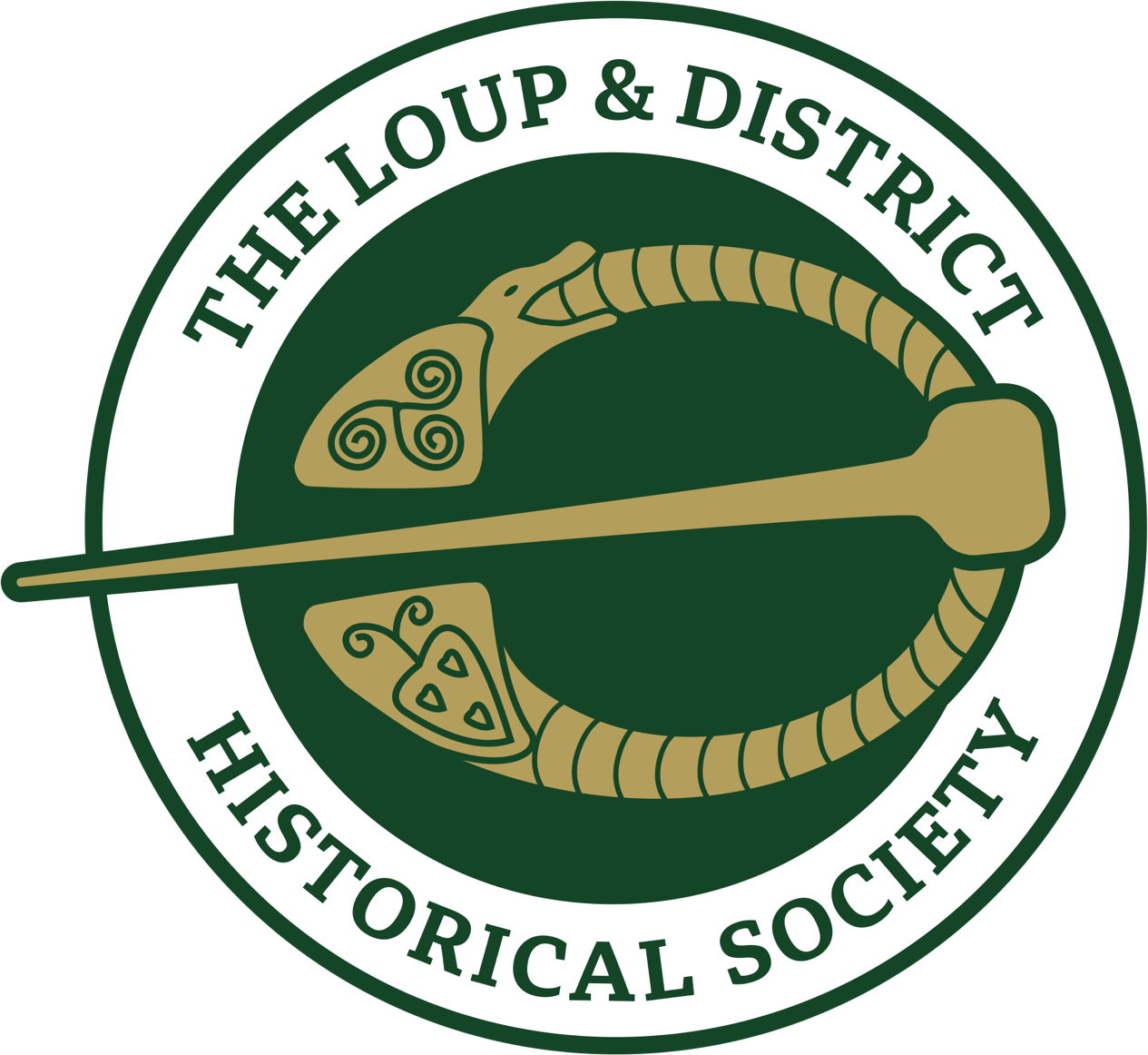By R. Cullen
This article is not meant to be a deeply researched, carefully documented record of a social service in Magherafelt in bygone days. It is rather a word picture, memory’s film of myself and a few friends. Few scenes and sounds retain the clarity of those visual ard audio impacts made in childhood by lives of people whom circumstance-self imposed or fate inflicted-existed within the precincts of our Workhouse situated in Townparks. My recollections are from about 1924 onwards.
The building, large sombre blackstone, relieved by white or light grey where walls met at right angles, was within a compound encircled by walls separating the inmates from the public road and surrounding fields. Tall trees towered above the barricade and also over the thorn hedge which bound the small area of tilled land outside the Pale. In leaf these increased the screening and at the Fall the eeriness. Entrance to the fortification was by tall iron gates.
A rail suspended above these supported a lamp giving gas light glitter as night fell.
Curiosity to see what went on behind the walls often seized me and opportunity came when I was charged with delivering each month ‘The messenger’ and ‘Madonna’ to Miss Tohill then matron in the Infrimary. The first few visits were made with bated breath-timorous intrusions into a strange dim world where, within the buildings, even day light filtering through the finely latticed windows was paler than outside. Once within the gates a wide path edged the sward in the centre of which was a walnut tree but I never found a walnut. To the left of this stood the first entrance to the building proper-the department for some of the administration, the living quarters of the chief porter Johnny and his first assistant Jimmy. These directed and informed all those who had occasion to call. Here, too, was the department for “bed and breakfast’ of the knights of the road and their ladies. There was a strict segregation of the sexes and the two ‘marshalls’ masterfully conducted them to
their respective mattresses for the night. Admission had to be before seven p.m. Bread and tea were provided and in the morning these nomads took to the road again, but seemed to reappear again on regular dates-the hiring fair or Moneymore fair day.
Some came and went alone, others in small family groups. A few were always silent and sober. More, before seeking their haven for the night, had indulged freely in the then cheaper ‘consoler’ and would have lingered outside the gates to heartily renew old friendships or more often to express deep antipathies. Fear gripped me when I heard their angry ‘lingua franca’ and I would back and fro a few hundred feet several times before mustering courage to dart past. Some of the personalities are vividly recalled. There was
‘granny’ whose ability to walk decreased as the last few gills of ‘red biddy’ took increasing effect and her final movement was more of a roll than use of feet. The ‘street singer’ with wife and twins, despite hardship, had voice and frame which effervesced merriment. I can still hear his action song about fleas dramatically rendered in Broad Street where the independent bus was about to pull out to Belfast.
Then his cap went around to receive the few pennies. I have heard no other one sing this masterpiece. Maybe the song was his own effort but hardly likely to be a runner up in the European Song Contest. He did not mimimise the capacity of the miscreants.
Apparently amusing, his verse revealed the difficulties of his life, One delightful little man, always neat and tidy, gentle spoken, claimed Donegal origin and appeared with each season and always gave us a call about midday. He had a share of the dinner but never accepted a cup of tea ‘for fear of putting the taste of the tatties’ off his mouth. Another gentleman must have found the morning washing facilities inadequate for, on release, he made for the stream which flows along the descending hill to join the Ballyheifer rivulet, There he produced his ‘vanity bag’ and departed clean shaven and fresh.
From the first building one entered the inner enclosure. A broad twelve inch cream tiled path led to the main building. On either side were flower beds carefully tended, an oasis of colour and beauty in an otherwise drab environment. Summer gave a profusion of varied bloom and winter too retained some colour—a gentle reminder that the earth can still yield beauty. I always found this door open and scuttled along a dim corridor past the Mistress’s kitchen apartment on one side and the Master’s on the other.
Miss Allen was quite friendly and to a small girl a fascinating figure ‘the essence of old world propiety and sophistication’. An elegant hair style, blooming cheeks, steady passionless eyes, modulated voice, spectacles resting on the bridge of her nose and moored by a coil of black silk clipped to her bosom she could easily have played her role in the royal house of the Hapsburgs. She often took me round her personal domain-her kitchen, where her cook in starched apparel ruled supreme. Upstairs was the Mistress’s lovely sitting room where one day I was shown a collection of embroidered articles made by the women inmates. It was sad their skill was not acknowledged and had no greater outlet.
Abruptly from this corridor was entrance to a large room used for dining. Memory still writes ‘stark’ here. Heavy wooden tables, benches, hard chairs, enamel mugs, enamel plates, enamel jugs, knives, forks, spoons-the minimum for utility seemed the complete furniture. My call was in the afternoon and sometimes I saw tea served. Each place was set with a small white loaf cut in four and topped with a piece of butter. One lady who survived the rigour of workhouse life recently described the other meals. Breakfast was similar to tea, dinner was spuds and soup and supper porridge.
She is very hearty in recalling Christmas which apparently was the one day which brought satisfaction to a healthy appetite. She laughs at the memory of the lashings of beef given that day. In addition to food those who smoked or chewed tobacco were given two ounces per week and snuff too was provided.
The route to the Infirmary cut diagonally across the dining room and led to an inner yard at the upper end of which was the building I sought in order to deliver my literature. Here the sister and a nurse or two cared for the sick and dying and struggled with the limitations of the system then.
What did the inmates do all day long from their early rising till locked in their rooms at seven p.m.? A few were incapable of work and wandered aimlessly around. Able-bodied men worked under the watchful eye of the Master, Mistress or their deputies. Clad in their heavy grey brown clothes they cut the hedges, scuffled the paths of stone chippings, pulled the weeds and in season tilled and harvested the big field sloping to the railway and outside the walls. Occasionally the carpenter required assistance to make coffins. These had no resemblance to the beautiful caskets of the outside world. White cheap timber went into their construction, ropes provided handles and the finishing touch was the application of black paint. A few had special duties. One was faithful to his task of apportioning each department’s ration of coal for the week and seeing the buckets delivered. The buckets were topped with a bunch of ‘bog fir’ often from the Ballynahone Moss from which a load was delivered once a fortnight. In 1923-24 a local gentleman recalls getting the tender for this at twenty-one shillings a load.
Women in their wide skirts and blue checked blouses, often with their spoon protruding from a pocket, went to their alloted tasks.
Scrubbing the tiles seemed a never ending task. With their large buckets, cloths and brushes the floors gleamed. The scrubbers seemed to take pride in the spotlessness of the floors and paths.
During the operation should an erring foot be placed on a surface not yet dry aim could be taken with a dripping brush or an oozing cloth. Picking one’s step was prudence. The laundry with its tubs, washing boards, and soap kept many a back bent for hours and those old irons heated by the fire brought perspiration to many a brow. A good soul who in later years gave helpful service to several families in the area, when complimented on her laundry skills would recall, ‘I got a sketch of the business in Daisy Hill’. Washing dishes and cooking utensils also provided occupational therapy. The detergents were not of the mildest kind designed to keep your hands as soft as your face.
The children were miniature adults in somewhat similar dress.
Prior to the Twenties there had been resident teachers but that ecuational practice had changed and the boys and girls joined us in the walk to the town schools. Lily, the two Paddies, Willie, and others with names now forgotten. They talked little of life inside, were full of zest for the outside world and joined in our chat of local happenings and events in school. In class they were genial well-behaved little friends.
The workhouse gates have gone now and its buildings transformed and increased to make our Mid-Ulster hospital. Traffic is freer. In the old days those gates opened for the clergy who came to minister to members of their flock. There were services on Sunday and a priest of the parish said Mass at ten a.m. Father Downey pushed his bicycle up the hill and Father Moore availed often of horse and side car. Members of Saint Vincent de Paul saw that ‘nine copies of newspapers, booklets and pamphlets’ were taken weekly to the workhouse.
The Guardians came to their conclaves to discuss and decide the proper conduct of affairs within the walls—the appointment of staff, the choice of tender for the necessities of life etc. Occasionally a few Guardians came on tour of inspection to see that all was well within. Carts and ponies and trap (later vans) brought in supplies-clothes, food, and the coal which on winter evenings provided a little cheer as the inmates sat at the open fires-women on one side, men on the other before they retired to their rooms.
New entrants moved slowly, chilled at the thought of surrender of freedom and fear of the unknown. For those inside, ‘passes’ to the outside world could for a compelling reason be obtained but there were never a great number on the road. A very few appeared sufficiently frequently to become known to us though not by name. The small figure with rolling gait, sharp chin tilted, his gaze on distant horizons earned the title ‘wee John the sailor man’. He still lived in mind his life at sea and should he stumble on a stone on the road there came the pre-emptory command ‘Clear the deck’ The tall bent aged figure with the accent more local clutched under his arm a few personal garments, the remnants maybe of his personal property. He rarely appeared without his small bundle.
Young Paddy skipped down the road lightly to join a school pal and left pleasant memories and the question ‘What became of him in life?’.
For some there was the final exit when Barney the Greengrocer provided his float to convey the remains within the black coffin to the church for a requiem mass and the burial in Milltown. The remains of others were carried by fellow inmates to first the little graveyard which lies in Ballyheiter across the railway line, and later, when that had its complement, the one which is adjacent to the tall chimney of the present hospital. Occasionally we watched these through the hedge saddened and mystified by the glum silent procession. No tears were shed and it is consoling to remember the clerical figures who stood by as the brown clay concealed the black wood. The soil forming from the fallen leaf year after year has almost obliterated the function of these two sacred spots but they will yield up their dead at the bugle call as surely as the monuments in Glasnevin or the slabs in the Poets’ Corner, Westminster.
Reprinted, by kind permission, from – Journal of the South Derry Historical Society, Vol. 1, 1980/81



